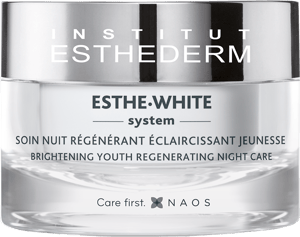Wat is het?
Peptide.
Waarvoor dient het?
Part of Cellular Water Technology.
Naos has designed a perfectly defined water that respects the 3 fundamental criteria of physiological fluids: pH, resistance to oxidation and concentration of mineral salts.
It optimises cellular function and preserves the balance of healthy skin.
Hoe wordt het verkregen?
Component naturally found in the skin, obtained by synthesis.
To select an ingredient, NAOS can call on synthesis in order to:
- reconstitute a natural molecule without having to extract it from a plant and thus better respect biodiversity,
- obtain a pure, perfectly defined ingredient.












